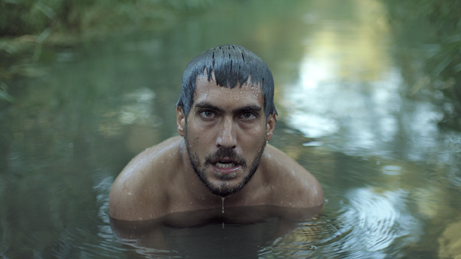
Berk Hakman in the Turkish film BEYOND THE HILL (George Chiper-Lillemark)
Could the higher quality in this years world narrative competition be the result of administration changes administration, namely the appointment of Frédéric Boyer, formerly of the Cannes Film Festival, as artistic director of the Tribeca Film Festival? Whatever the reason, there has been a step up in this section, which has in years past been the festivals most uneven. Some of these films may appeal to one demographic more so than another, but they wont leave you feeling indifferent nor will they come across as just a slot filler.
Still, with 89 feature films overall, the programmers have overstuffed the slate. A good dozen films could have been shaved off to make a leaner, more consistent edition, and wouldnt have been missed. The selections skew toward first-time directors, 33 of them, but more and more boldface names on the international scene are making a stop here: two-time winner at Venice, Alex de la Iglesia, arrives with As Luck Would Have it, starring Selma Hayek; and Marjane Satrapi, the Cannes Jury Prize winner for 2007s Persepolis, brings Chicken With Plums.
Perennial invitee Michael Winterbottom returns with his best film in years, and one of the festivals highlights, Trishna, a vivacious and contemporary update of Thomas Hardys Tess of the DUrbervilles. It would have been difficult to update this 19th century tale of social class in Hardys original setting, Englands West Country. Premarital sex and single motherhood dont amount to much scandal in Britain today, but transplanting the novels essence to modern day India works remarkably, with its conservative rural society clinging to a caste system, not to mention the huge gap between the poor and the moneyed of Mumbai. The dramas told at such a clip that its one of the rare films that you wish was longer. It will be released in July.
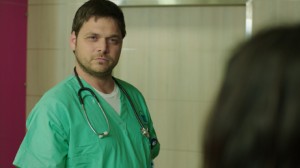
Ohad Knoller in YOSSI (Tribeca Film Festival)
Nearly 10 years ago, American-Israeli filmmaker Eytan Fox (The Bubble) won acclaim at Tribeca with his hit first film, Yossi & Jagger, about two Israeli soldiers who are (somewhat) secret lovers. That film was a novella compare to its sequel, Yossi. Ohad Knoller, who won the festivals best actor award in 2003, reprises the title role. Now in his thirties, the by-the-book Yossis a Tel Aviv cardiologist and more than 20 pounds heavierno surprise, since his diet consists of Coca-Cola and lo mein take-out. Hes completely closeted, keeping his love life to himself. Even an ebullient colleague (a swaggering Lior Ashkenazi) has no idea which way the reticent surgeon swings. On his off hours, he has no social life to speak of, and for sex, he turns to porn. Yossi tries out online dating, but the result is painful in a memorable scene with spot-on dialogue. By far, this is Foxs best film, and the moment-to-moment acting is the antithesis to the self-conscious histrionics in many of the American indies this year. Its bound to win an award (Id say either best director or screenplay). The earlier film is available on Netflix Instant, but its not necessary to see beforehand; this one easily catches you up to speed.
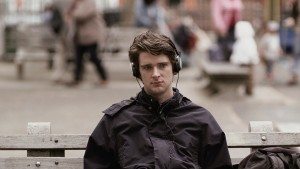
Will Rogers in NANCY, PLEASE (Tribeca Film Festival)
Speaking of American feature films, the most compelling Ive seen (out of 12) is Nancy, Please, and I dont mean that as faint praise. It takes a simple problem and enlarges it into an epic quest. Set in beautiful autumnal New Haven, Connecticut, grad student Paul (Will Rogers, who resembles an over-the-hill choir boy) has moved in with his girlfriend. The breadwinner for the couple, she works extra shifts at a hospital while he spends his days staring at a blank computer screen. (She even tells him bedtime stories, retreads of 80 movie plots. Ladyhawke is one of his favorites). In a case of either forgetfulnessor most likely self-sabotagePaul has left behind his annotated copy of Charles Dickenss Little Dorrit at his former residence. All he needs to jump-start his PhD dissertation is the return of the book. But his ex-roommate, Nancy, wont answer his numerous calls.
We dont see much of her early on. Paul describes her as a creature of hate, which only builds up her entrance. She may not be all that Paul has projected, but Nancy is a piece of work. (Eléonore Hendricks more than fulfills the audiences expectations in this rich supporting role.) Everyday humiliations pile up for Paul until his bedhead hairstyle matches his mental state. He still doesnt begin his dissertationall because of Nancy, or so he rationalizesand this innocuous setup morphs into an unlikely psychothriller. Director and co-writer Andrew Semans has also made one of the most effective contemporary onscreen portrayals of male impotency. Not to sound too academic, it could be called The Emasculation of the American Generation Y Male. So far it has no distributor.
The subtly sinister Beyond the Hill puts a twist on Sartres No Exit. Hell is still other people, but they now include members of your family. Set in the Turkish backwoods, it plays out like a desolate Western, where the McCoys attack the nomadic Hatfields, and possibly also other McCoys. First-timer Emin Alper plays constantly with the point of view, withholding important clues as to whos doing what to whom, and holding the camera in place for revelatory reaction shots. Alper depicts his multi-generational (and somewhat bonkers) family with clarity while refraining from spelling out everything all at once, and yet the film is never opaque or confounding. Surreal and alternatively blunt, this steady burner keeps you on your toes. After viewing many films with terribly uneven and often amateurish acting, the cast of Beyond the Hill is a triumph.
How did Lucy Mulloy, another director making a feature debut, ever film her Una Noche on location in Cuba? The authorities couldnt have read the script. Her take on dilapidated Cuban life is unsentimental, gritty, and directly critical. Among the societal ills, medicine is scarce, and prostitution is the surest way to provide for a family.
Two teenage boys scavenge to build a makeshift raft for the 90-mile trek to Miami. Raúl wants to reunite with his father, while Elios motivation is as personalbut hormonal. He cant help staring at his friend, whether they are working together in a hotel kitchen or when Raúls shirtless. Inspired by real events, Una Noche is told through the narration of Elios twin sister Lila, who, once she suspects Elio plans to abandon her, sets out to sabotage her brothers plans.
Filmed in Havana (the films real star), Una Noche follows in the footsteps of such rough-edge neorealist films as Los Olvidados (1950), and turns suspenseful when the boys (plus one insistent passenger) set off for the U.S. It even withstands the occasional forced melodrama that almost capsizes its well-crafted credibility. Since the festival began, real-life news has upstaged the films premiere. Two of its stars, Anailin de la Rua de la Torre and Javier Nunez Florian, who play the siblings, have disappeared in Miami en route to New York.
Now for more mainstream fare: Unit 7, in which Spanish director Alberto Rodriguez never quite tops his crackerjack opening rooftop chase. For the first half-four, the script blurs the boundaries between good and bad cop in an anti-narcotics police unit cleaning up the Seville slums for the 1992 World Expo Fair, one junkie at a time. Then the film eventually takes the predictable route. One cop spirals out of control on a drug-fueled power trip; a tough vet shows a hidden emotional intelligence, making it his mission to save the life of a beautiful drug addict played by Lucía Guerrero, who looks like a young Claudia Cardinale. (Yes, wow.) Nevertheless, the director packs the film with so much detail and always moves the story forward. It also features a major star turn by Mario Casas, a Spanish star bound to break out internationally. A pretty boy in the mold of a 1950s teen idol, he plays against type as a pitiless rogue cop.
In 2009, Bradley Rust Grays The Exploding Girl earned the best actress award for its lead, Zoe Kazan. He is back this year with the nearly comatose Jack and Diane, a significant step back compared to the low-key but heartfelt acting of his first film. He reins in his lead, actress Juno Temple, who singlehandedly energized such previous films as Kaboom and Dirty Girl. She plays Diane, a waifish little-girl-lost dressed in a frilly 70s baby doll dress, with a mop of blond hair hiding her face. Dianes a mess: she has lost her phone, shes prone to nose bleeds and fainting, and she cant hold her liquorlets just say a lot of bodily fluids are excreted. But the role doesnt make use of Temples charisma. Her colorful wardrobe gives off more sparks.
While spending the summer in New York City, Diane desultorily becomes involved with another teenage girl, the butch Jack (Riley Keough)but the stilted line readings flatline whatever chemistry exists between these two young women. Threaded into the film are surrealist shots of a slimy and hairy creature, animated by the Brothers Quay (film nerd alert!), an overly literal metaphor for Dianes fear of intimacy. Here, love means I want to eat you and put you inside me forever. If you do check this film out, look for a transformed and tattooed Kylie Minogue.
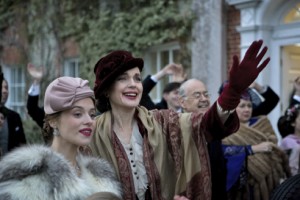
Zoë Tapper and Elizabeth McGovern in CHEERFUL WEATHER FOR THE WEDDING (Mark Tille)
Many of the films getting a lot of red carpet attention already have a distributor: Deadfall, Take This Waltz, and Your Sisters Sister. Strangely, Cheerful Weather for the Wedding, which had its world premiere last Friday, doesnt, even with a potential built-in audience. It stars Elizabeth McGovern in a downscale Downton Abbey, and centers around a wedding in a prosperous country home, with a reluctant bride (the gorgeous Felicity Jones) hiding out in her room swigging rum while her extended family, with all of its various intrigues, snipes downstairs. Theres also a randy vicar, a mischievous child, and a cook who, despite her blindness, perceives all. Oh, and its set in 1932 England. (You can already see the lines forming). Among the invited guests is the brides summer fling, anthropologist Joseph (Luke Treadaway). Will she go through with the wedding? Will he confess his love for her?
McGovern plays a shrewder and more determined matriarch than her Downton counterpart. (Mrs. Thatcham first enters on the cue, Some mothers eat their young.) The film snaps along with dialogue loaded with barbed bon mots, though the pace slackens a bit with its extended countryside interludes. Though the leading man is thoughtful and charming, hes something of an arrogant cadits never a good idea to insult the mother of the woman you love. As a result, his nemesis, McGoverns controlling and scheming Mrs. Thatcham, will convince you that every decision she makes is the right one.
As always, the most serendipitous discoveries are found in the Spotlight and Viewpoints sidebars. A wonky gabfest for film buffs, Side by Side will alter what you see for the rest of the festival: is what Im watching digital or celluloid? Does it matter? Yes, according to many of the persuasive talking heads interviewed by Keanu Reeves (the documentarys producer), who appears in a variety of hairstyles. The arguments of digitals detractors become moot, though, as the new technology gains film-like nuances, including a deeper depth of field and a larger color palette. Its doubtful that many who saw Slumdog Millionaire or Hugo even noticed that they were shot not on film. And its remarkable how much the medium has advanced in the last 15 years from the home movie look of The Celebration (1998). Even the visually celebrated 28 Days Later now looks raw. Among the movies in this years festival, Trishna, beautifully filmed by Marcel Zyskind, makes the best case against digital cinematography, but to be fair, Beyond the Hill, shot in HD, looks almost as good.
Youre bound to learn something, from the invention of the CCD chip to the new work schedule for actorsnot much down time in the trailer. A digital camera doesnt need to be reloaded, offering the possibility of continuous take after take. However, director Christopher Kenneally devotes a good amount of screen time to actress Greta Gerwig, who decries the fading use of film and the latest trend of watching movies on tiny, portable devices. This is ironic, considering she built her career on the skimpy images of such DIY films as 2007s digital trailblazer Hannah Takes the Stairs.
One of the finds this year is the Israeli pressure cooker Room 514. It has the unvarnished, no-frills, jerky hand-held look of many low-budget digital films, but that works in its favor. Most of the scenes take place in a tiny interrogation room, and with close-ups galore, you will feel claustrophobic. It also features the most complex role for an actress in the festival thus farAsia Neifeld as the alternatively sensuous and stern Russian-born Anna. Shes a dutiful daughter and a no nonsense defense forces commander who goes by the book but eventually tosses it aside for a tryst with a subordinate. Shes a sort of good cop/bad cop, whichever is the most useful tactic at the moment.
Her tour of duty concludes in three weeks, and she wants to tie all remaining loose ends, chiefly her investigation of an officers involvement in the death of a Palestinian in the Occupied Territories, but shes all on her own in this matter. Her male colleagues have backed away from this political hot potato. Although the issues are specific to Israel, the themes are universal. With some tweaking, the film could have been set among American troops in Afghanistan. Directed by Sharon Bar-Ziv, this is another noteworthy first film.


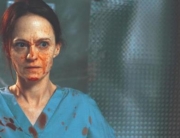



Whether you rate her acting, or whether you like the films, it seems that getting Kylie Minogue on the big screen is becoming a bit of an event. The buzz around her other bit part in Holy Motors this year has got me well and truly excited.